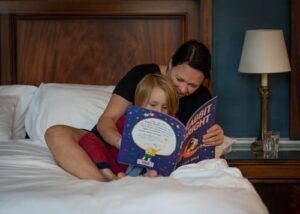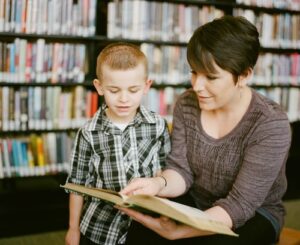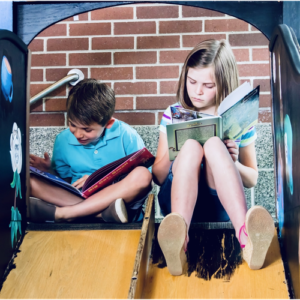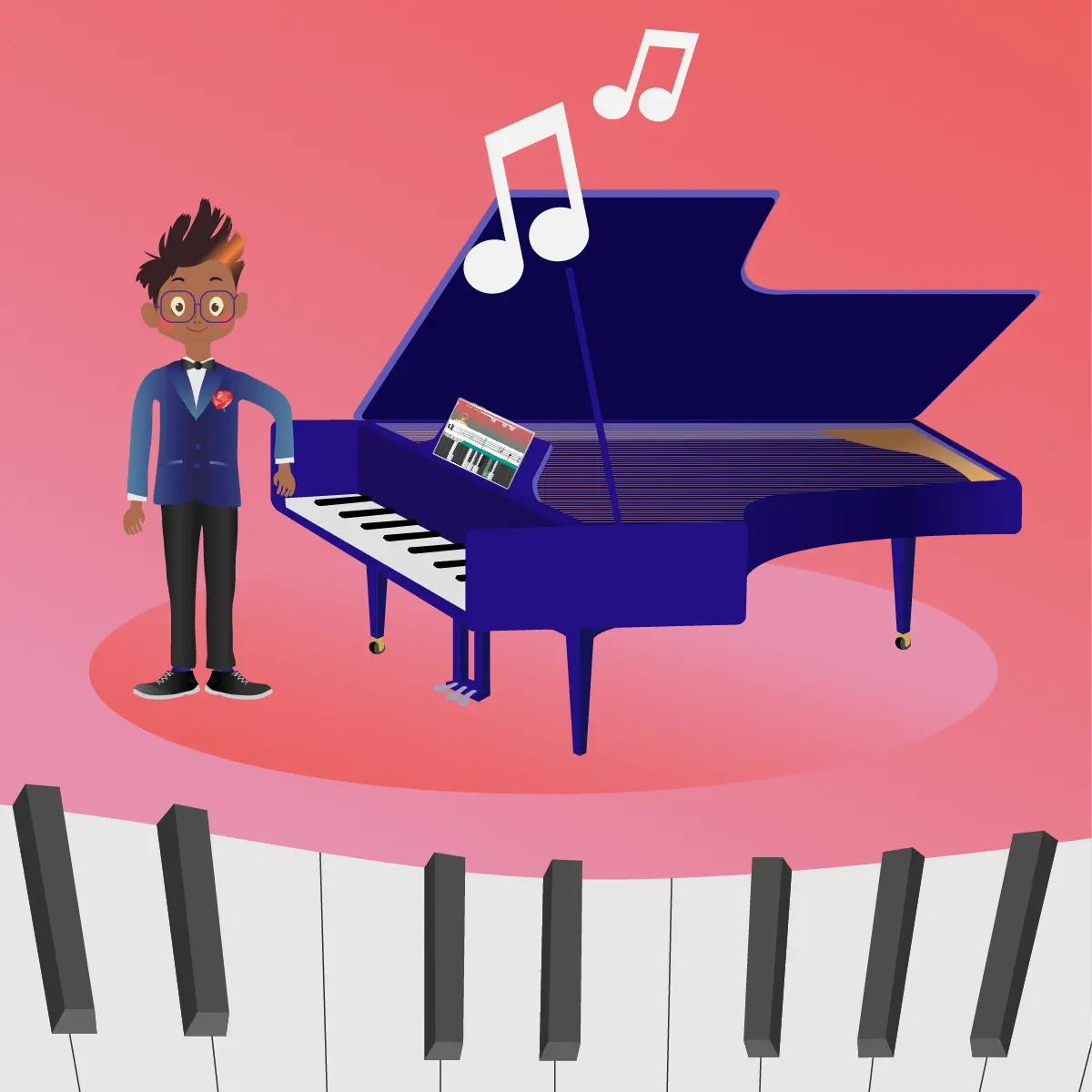By Arctic Meta,
Most parents understand that a kid’s ability to read will greatly impact their learning journey. The better they can read by the time they get to school, the more they will learn. The more they learn, the more chances they will have later in life. Reading is a fundamental building block that can set a child up for immense success.
Most parents understand the importance of reading, but getting children interested in it isn’t the easiest task. So many parents ask themselves the same question all the time. ‘How do you make a child love reading?’
Well, there’s a bunch of tips and tricks that can help children fall in love with the written word and develop a life-long love affair with books… so read on to find out more.
Introduce Reading Through An App

In the modern world, most kids have become familiar with apps and phone or tablet-based games long before they can effectively read. This is such a common phenomenon that many of the gestures involved with technology, like swiping to move to the next page or pinching to zoom in, have to be learned by adults but seem to just be natural responses to kids.
It only makes sense that apps and software are, therefore, great ways to introduce reading to kids. There are a great number of programs, apps and websites out there that incorporate virtual learning with reading, and even a very special app coming out soon (but more on that later).
Swap Music For Audiobooks

Music is great to listen to, but even though Taylor Swift is re-releasing all her old music again, it isn’t really going to help a kid fall in love with books. Audiobooks often don’t get the credit they deserve. Successful reading involves more than visually seeing printed words and translating them into meaning; there’s also the element of fluency.
Fluency in reading is the ability to read quickly and accurately with the appropriate expression. Things like having an emphasis on specific syllables, giving the voice an upwards inflexion for questions and leaving the appropriate pause after a comma are all examples of effective reading fluency.
One of the most effective ways to achieve reading fluency is to listen to someone accurately read something. Audiobooks are a great tool because they can allow a child to hear effective reading fluency as they follow along in real-time.
Create a Reading Nook At Home

Creating a designated reading space in the home can add a touch of magic and a whole lot of allure to reading. It doesn’t mean parent’s need to spend thousands of dollars creating a library; it simply means finding a space that can be just for reading. This can be permanent or temporary; the main point is that it needs to be available whenever a child would like to read.
A designated reading space can be a comfy chair next to some bookshelves or even just a pillow fort filled with their favourite books. Creating a space like this can give children a sense of ownership over the space, especially if they help create it. It can also help ignite their imagination and make reading feel more special.
Find Ways to Bring Books to Life

Incorporating activities into life that are inspired by books is a great way to increase a child’s interest and help them become life-long readers. Think of it as a real-life crossover; after all, there’s a reason why Marvel movies all connect; it generates interest in future stories.
Bringing books to life can happen in many ways; it’s just about enhancing the experience. The easiest way to do it is to incorporate some of the senses. Imagine how exciting it would be to reach the point in ‘The Lion the Witch and the Wardrobe’ where Edmund is offered candy by the White Witch, and at the same time, there’s some candy presented to a child. It’s all about giving the kid a chance to be further immersed in the story.
The possibilities are endless. Imagine watching a documentary about London after reading Harry Potter or going to a farm to see The Three Little Pigs in real life.
Discuss Writers With Your Children

By the time reading has become a regular activity in the household, kids will very quickly develop an attachment to certain books or stories. This can also mean that they might have some favourite authors.
Having conversations about authors can ignite a sense of wonder but also engage a child’s critical thinking ability. It helps them to understand their connection to the story and the writer. Are they connected to the characters, or do they just like the words that are used?
Read The Story Then Watch The Film

It can be an incredible experience to see a book turned into a film. For children, this plays with their sense of self, their imagination and their perception of what is possible. It can be a fantastic idea to pick a book that already exists as a film and read it together. Then when the book is finished, have a movie night.
After the movie, take the time to talk about what was great about it. Was the book better or the film?
Read Aloud

Reading aloud to children comes naturally to most parents. They can’t read yet, and a story helps entertain them or put them to sleep. However, reading aloud actually does way more than that. As stated earlier, hearing someone else read can help with fluency, but it also creates an intimate social bonding moment between a parent and a child. For many people, the first memories they have of books are the ones that were read to them as children.
When kids experience something they enjoy, they are more likely to do it again. This can lead to positive habits in the future and help give them a head start on reading.
Re-Read Favourite Books

The way kids experience books is quite different from adults who have already mastered the skill of reading. Most children begin with imagery, then they learn how to turn pages, then they realise that there is a story contained in these pages.
Repetition is one of the key learning elements for children. It helps them to cement techniques, skills and information. Repetition is the reason why the ‘Hokey Pokey’ is such a successful song for teaching the difference between left and right.
Re-reading a child’s favourite books can do a world of good for their comprehension and confidence.
Ask Your Children Questions

When reading a story to a child, it’s very important to ask questions. Do you know what that means? Have you ever done that? Would you like to do that?
The simplest reason why asking questions is a good thing is because hearing a story isn’t any fun if the kid doesn’t actually understand what’s going on. It’s also a good opportunity to give children a chance to form their opinion. Kids are full of opinions and love to give them, but often there aren’t a lot of opportunities to do so in day to day life.
Most academics agree that in the early stages of learning to read, if the focus is only on turning the written words into sounds, children won’t really find it to be enjoyable. To make readers out of them, it’s important to get them to love the story… or at least have an opinion on it.
Model Good Reading Behaviour

Kids generally copy the behaviour of their parents. This is the reason why they often will repeat things that most parents hope they hadn’t heard in the first place. The actions, words and tasks they see their parents doing are basically a blueprint for what they perceive to be normal and acceptable behaviours.
If a child spends a lot of time in the car with a parent, they are very likely going to pretend to drive during playtime later. For this reason, many experts believe that the things a child grows up surrounded by will have an impact on them later in life.
If they grow up surrounded by junk food, they will probably love junk food; the same goes for if they are surrounded by books and regularly see their parents enjoying reading.
Read Together Before Bedtime

Making a routine out of bedtime reading will help to create a nice bonding ritual between parents and children. It allows kids a chance to be engaged in something that isn’t a screen before they go to sleep, which will relax them and help improve their sleep quality. It will also give them a chance to see how engaging a good book can be.
Even the shyest of children loves to be the centre of their parents’ worlds and having a story read to them completely satiates that need.
Read What your Children Like

One of the first places parents begin when they encourage their children to read is by sharing their own childhood favourites. This is a beautiful exchange between the generations, but it’s also useful to check in and see what topics children are interested in.
There can be many occasions where a child appears to not be interested in reading, but the truth of the matter is simply that they’re not interested in the reading material.
When children become interested in a particular topic, the level of interest is often fast and intense. This intensity can be used to a parent’s advantage. Take the time to ask them what they want to read about. If they like a story, ask them what they like about it. Perhaps they love a story because of the characters; maybe it’s simply because they’re really into boats at that point in time.
Reading what they like can keep them interested but can also help to understand how their wants, needs and interests are changing.
Take A Visit To the Library

Yes, libraries still exist, and they are still a great resource for parents. One thing that many don’t realise or capitalise on enough is the fact that most public libraries are free and are run by librarians, who are basically people that are paid to make kids interested in reading.
Libraries are also creative hubs, and there’s normally some sort of reading activity regularly occurring. This can be group reading times, crafting activities linked to popular books, or even days where kids can come dressed up as their favourite book character.
Libraries can also be a place where kids are able to find out about authors, stories or subjects that would normally never enter their worldview. They are a cost-effective resource that can provide endless entertainment, education and interaction.
Encourage Your Children To Read With Friends

Many adults join book clubs. There are many reasons why they choose to do so; sometimes it’s the connection, sometimes it’s to have intellectual discussions, sometimes it’s for the wine and cheese that accompanies it.
Many people actually join book clubs simply for accountability. They want to get better at reading regularly, and being a member of a book club forces them to dive into a book nose-first.
This same approach can work for children (well, not the wine and cheese but the accountability). The only thing that is needed is for two people to read the same book. It doesn’t need to be in a specific book club, but encouraging kids to read the same books as their friends will give them an added reason to keep reading.
It can also give them shared interests and even a common language. A large portion of millennials around the world might not have anything in common with each other… until they are asked which Harry Potter house they are in.
Travel With Reading Material

As far as experts are concerned, all reading is good reading. This means that any opportunity to read should be capitalised on. Most parents know that sometimes being away from home can bring with it some inevitable boredom for kids. The waiting room at the doctor’s office, sitting on the train, travelling across the country to see family, all of these situations present limitless chances that kids will complain they have nothing to do.
Packing reading material can quickly solve the boredom problem, especially if it is chosen wisely and piques the interest of the reader. After all, even kids sometimes hate downtime.
Set Regular Time to Read Together

Bedtime reading is a great chance to encourage literacy when kids are younger, but as time goes on and they get older, life starts to happen and can sometimes get in the way.
If it’s possible, setting a regular weekly time where the entire family reads can not only help keep the habit going but can also give everyone in the house a much-needed break from the world.
Imagine the good it would do to just take 2 hours on the weekend to read, without phones, without homework, without band practice or school assignments.
Encourage Your Child To Ask Questions

Asking questions is an important step in the formation of language and reading skills. Kids are incredibly resourceful and will do just about anything they can to please those they love. This includes making the right sounds or gestures when they are being read to or when they are reading aloud.
The tricky thing is understanding that just because all the right sounds and gestures are being made doesn’t mean the child actually understands what is going on.
Questions are incredibly important. They are how humans understand the world around them. When it comes to reading, it’s integral that kids are asked questions every step of the way. What does that mean? What do you think it means? What would you do if this happened to you? Kids also love being asked questions, so if they associate questions with reading, they’re probably going to read more.
How Mussila Can Help
Mussila is an award-winning app that was created to help kids progress in the world of musical education. What sets Mussila apart from other ed-tech apps is that it combines a well-researched curriculum with the ever-important element of play. The combination of these two worlds, with a bit of tech magic, provides parents and schools with an immersive program that not only gives kids a musical education it also makes music education available to everyone that has an internet connection.
Mussila has taken this incredible concept and applied it to reading. Very soon, Mussila will launch ‘WordPlay,’ an app that takes the principles that have worked exceedingly for music education and applies them to help kids learn to read.
The past few years have allowed technology to positively influence the methods with which education can be conducted, and WordPlay is geared to become a frontrunner in literacy education. To stay up to date on all things related to this incredible application, make sure to follow Mussila on social media and check out the official app website.
Conclusion

There’s no denying how important reading is to set a child up for future success. Of course, as stated above, there are many ways to encourage kids to read more, and not all of them will work. The important thing is to make sure kids realise that books are important.
They are where ideas, information and imagination live. Books were here before they existed and will be here after they have moved on, but if they’re interested, there are entire universes of possibilities waiting for them between the pages of parchment.















